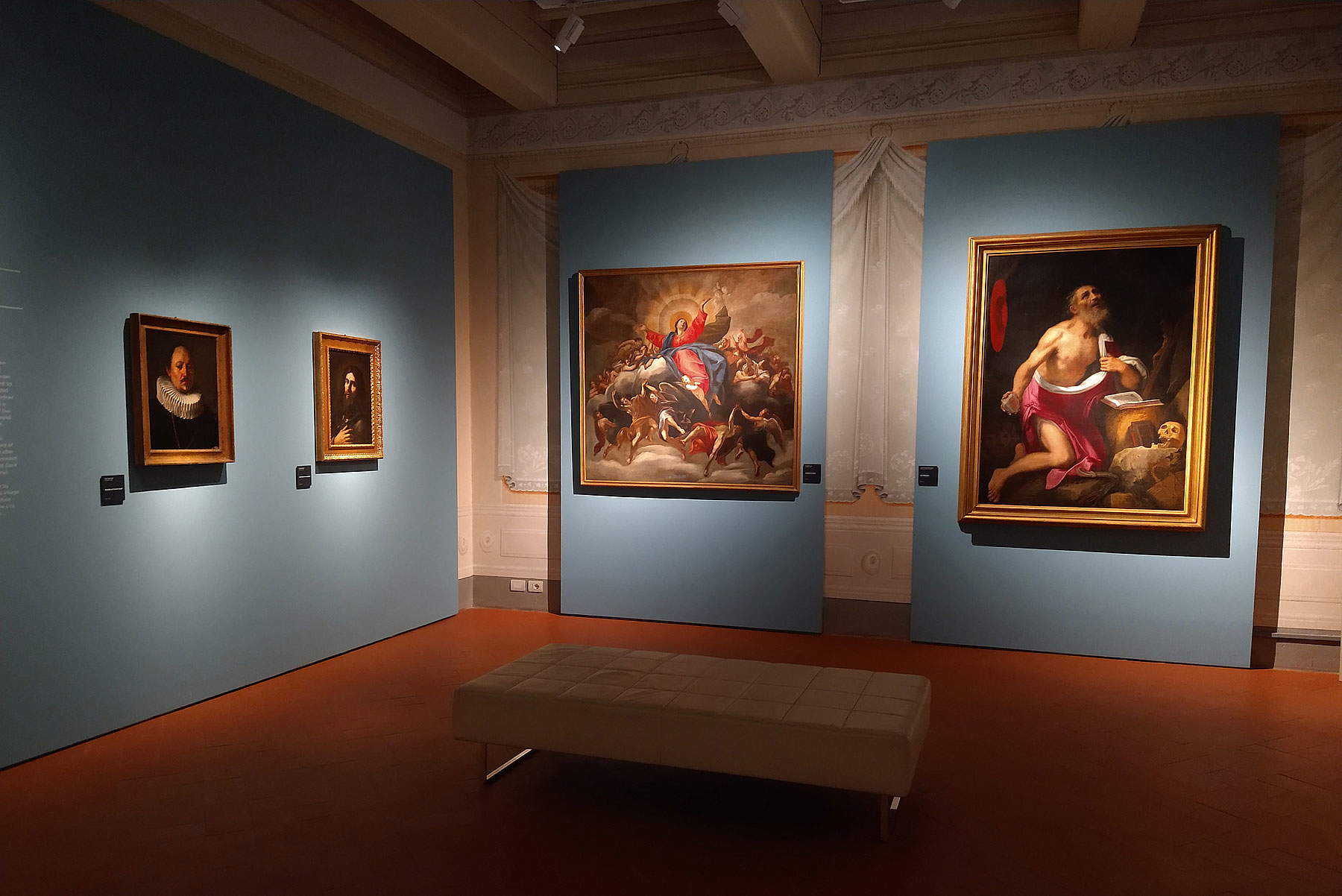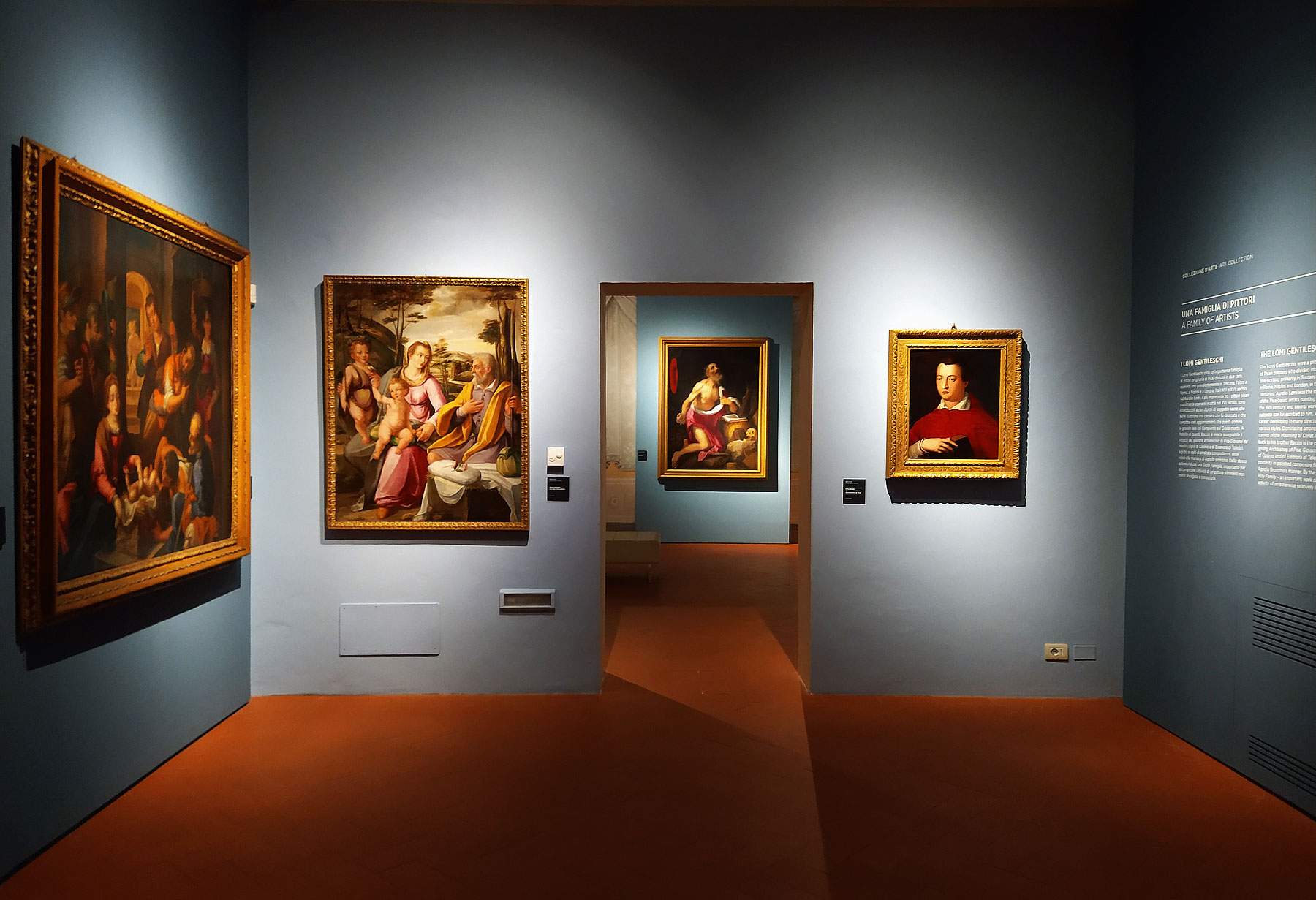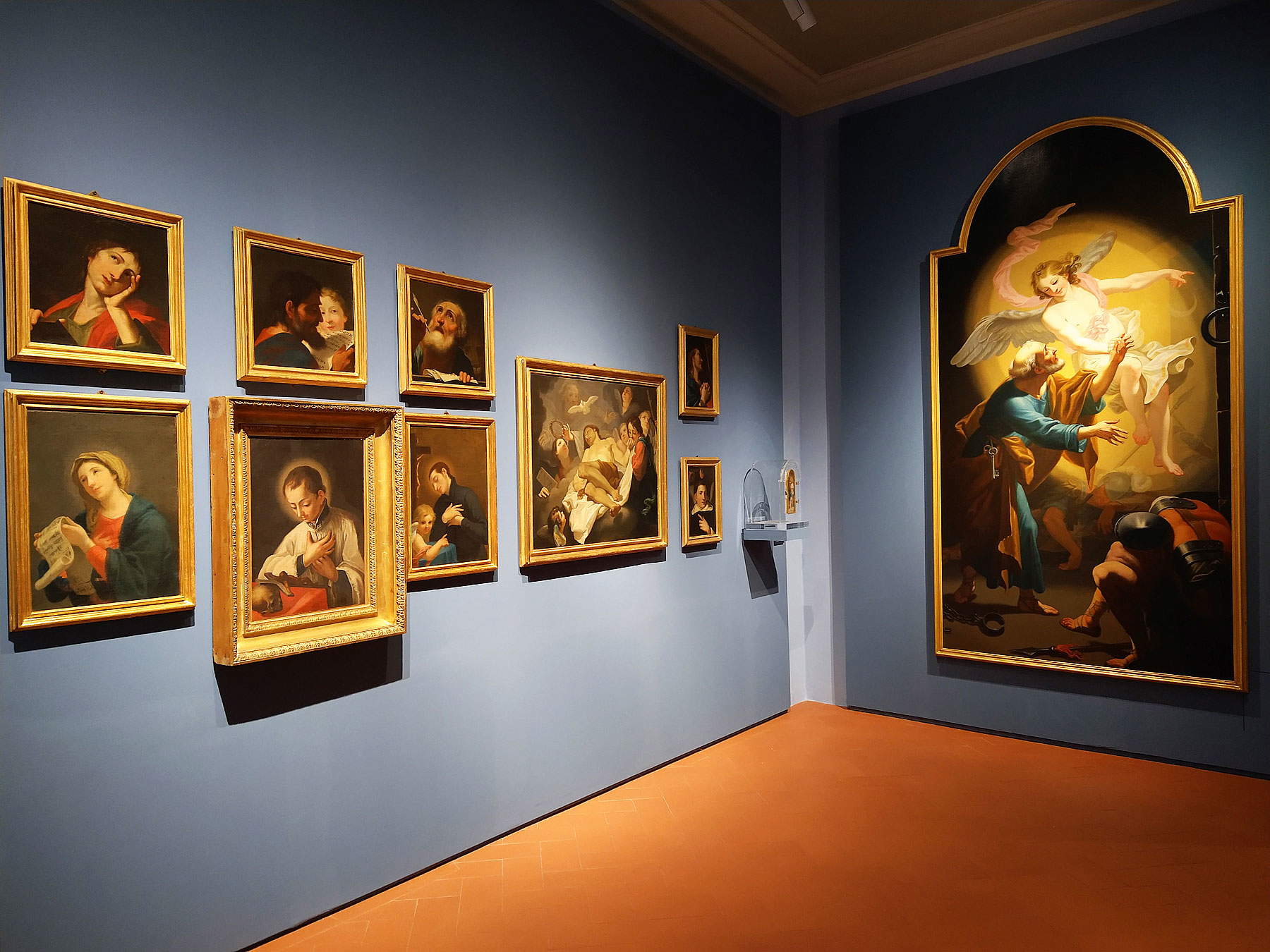In Pisa, Palazzo Blu unveiled today the new arrangement of the permanent collection with works from the Pisa Foundation, curated by Cesare Mari’s architectural firm PanStudio, already responsible for several of the institute’s temporary exhibitions: the spaces have been renovated, the new museum entrance overlooking the city has been inaugurated, and the works have been arranged on a new path through five centuries of Pisan art. What’s more, new panels have been installed, the works receive light from a new lighting system, and it will be possible to see the new placement of the works in the collection designed with the aim of achieving a rotation of those on display. The new spaces on the second floor of Palazzo Blu are scheduled to reopen to the public on September 30, 2021.
Palazzo Blu’s collection, one of the most important in Tuscany, stands as a collection designed to have a strong connection with the territory: great artists from Pisa or who worked in the city over the centuries, such as Nino Pisano, Benozzo Gozzoli, Aurelio Lomi, Orazio Gentileschi, Artemisia Gentileschi, and Giovanni Battista Tempesti, are represented in an arrangement that follows the vicissitudes of the arts in Pisa in chronological order. The public has been able to admire these works since 2007, when the renovation of Palazzo Blu was completed, allowing the opening of an exhibition center of more than 800 square meters, with the rooms on the first floor dedicated to the successful temporary exhibitions and the archaeological and medieval section, those on the second floor for the noble residence the Simoneschi collection, and the rooms on the second floor for the permanent collection of the Pisa Foundation. The renovated layout is thus a new stage in this recovery that has returned a very valuable heritage to Pisa.



The new itinerary of the Pisa Foundation’s permanent collection at Palazzo Blu begins, after crossing the brand-new terrace overlooking the Lungarni, with a large room dedicated to the 14th century: the public has a chance to see the gold backgrounds, starting with a Saint John the Baptist by Cecco di Pietro (Pisa, documented from 1371 to 1402), a protagonist of Pisan painting in the second half of the 14th century, part of a dismembered polyptych. The panel is flanked by paintings by Agnolo Gaddi (Florence, documented from 1369 to 1396), the Sienese Taddeo di Bartolo who was long active in Pisa, a unique opisthograph processional bandinella by Francesco Neri da Vol terra (Volterra, documented from 1338 to 1376), and two rare panels by the Master of San Silvestro (or “di Beffi” Abruzzo, active in the late 14th and early 15th centuries), an artist unrelated to Pisan affairs (a unicum throughout the itinerary), but exhibited precisely because of its rarity and the fact that it has been the subject of recent critical recoveries. Not far away, a detached fresco by Getto di Jacopo (Pisa, documented from 1396 to 1405) from the church of San Felice e Regolo (no longer extant) documents another very rare painter who worked in Pisa between the 14th and 15th centuries, and of whom only one signed work remains, preserved at the National Museum. Next door, the public can admire the wooden relief with Christ in Pity by Nino Pisano, thus representing one of the greatest Pisan sculptors ever. Also present is a singular and rare comparison of the splendid Polyptych of Agnano by Cecco di Pietro (so called because it was once kept in the church of San Gerolamo di Agnano, a small village near San Giuliano Terme), with the exact replica that was executed in 1936 by one of the greatest forgers of the 20th century, Federico Icilio Joni (Siena, 1866 - 1946).
The next room of the 15th century, on the other hand, reconstructs the events of the Monumental Cemetery in the 15th century through two works: the first is a panel by Vincenzo Foppa (Brescia, c. 1427 - c. 1515) that legend has it is the work sent by the Brescian artist to Pisa in 1469 to try to obtain the commission for the Camposanto frescoes, which later went to Benozzo Gozzoli (Florence, c. 1421 - Pistoia, 1497), present in the collection with the frescoed niche already in the church of San Benedetto a Ripa d’Arno and dating from the 1480s. We then move on to the sixteenth and seventeenth centuries, beginning with Medici Pisa: the fundamental paintings by Orazio Riminaldi (Pisa, 1593 - 1630), namely the portrait of Curzio Ceuli and the sketch of the central part of the dome of Pisa Cathedral, which he frescoed, attesting to the fecundity of the Pisan artistic environment of the time. The two works flank the St. Jerome by Ludovico Cardi known as Cigoli(San Miniato, 1559 - Rome, 1613), a Pisan artist by birth (he was originally from San Miniato) but of Florentine culture updated in Rome. A small selection, including Pier Dandini’s (Florence, 1646 - 1712) Jerusalem Assaulted by the Pisans and Jacopo Ligozzi ’s (Verona, 1547 - Florence, 1627) drawing for the Presa di Prevesa, recounts Pisan exploits from the Republican period to that of Medici rule.
The next room is entirely devoted to a family of painters, the Lomi Gentileschi, divided into two branches: one that worked mainly in Tuscany, and the other (the more famous one to which Orazio and Artemisia Gentileschi belonged) active in Rome and many other cities in Italy and abroad (Orazio and Artemisia, for example, also worked in London). The most important Pisan painter of the 16th century, however, is Aurelio Lomi (Pisa, 1556 - 1622), who dominates the room with his Lamentation over the Dead Christ. Not far away are a portrait of the archbishop of Pisa, Giovanni de’ Medici (son of Cosimo and Eleonora di Toledo) by Baccio Lomi (Florence, c. 1540 - before 1610), Aurelio’s brother very close to the manner of Bronzino, and a Holy Family by the same author. Orazio Gentileschi (Pisa, 1563 - London, 1639), on the other hand, is represented with an elegant Madonna and Child between Saints Sebatian and Francis, while Artemisia Gentileschi (Rome, 1593 - Naples, post 1654) is with her Clio, muse of history, a painting in which the painter is self-portrait. It closes with one of Palazzo Blu’s most recent acquisitions, the beautiful portrait of Artemisia Gentileschi executed by Simon Vouet (Paris, 1590 - 1649) and acquired in 2019.
A Madonna del Latte from the workshop of Massimo Stanzione closes the discussion around Artemisia (Stanzione and the Rome-born painter knew each other and frequented each other: they were good friends, bound by similar pictorial orientations) and guides the public to the last room, all dedicated to the 18th century and in particular to the work of Giovanni Battista Tempesti (Volterra, 1729 - Pisa, 1804). In particular, paintings of sacred subjects are collected, ranging from altar paintings to small works intended for private devotion, to give an idea of the kind of production in which the Volterran artist specialized.




“This arrangement, from my point of view,” said Stefano del Corso, president of Fondazione Pisa, “is extremely impressive and allows a better enjoyment of all these works than in the past. I am happy with this inauguration, because it is one of the many pieces of the initiatives that the Pisa Foundation, also through Palazzo Blu, has contributed to this season (I am thinking of the Book Festival, the Normale concert season that will begin on Oct. 18 in attendance), and it is also an opportunity to announce that from November the temporary exhibition on Keith Haring, an artist who has a special bond with Pisa, since here he created the mural Tuttomondo that we all know, will be inaugurated.”
“The second floor,” stresses Cosimo Bracci Torsi, chairman of the cultural activities committee of the Pisa Foundation, “had a very modest entrance, which was quite inconvenient: this palace was in fact recovered and adapted as a museum unfortunately not all at once, since the Foundation had initially been able to purchase a part of it, and only after some time came into possession of the rest, which otherwise would probably have allowed for a more logical and easier structure from this point of view. The entrance is now much more beautiful and pleasant: the covered terrace, which the Superintendency allowed us to create, looks like an impressionist painting. This arrangement was made by architect Cesare Mari and his daughter Carlotta, the architects who have been taking care of the arrangements of our temporary exhibitions for quite some time. The spirit was this: to make the exhibition of the works the best it can be and to make it flexible so that it can also be moved and small temporary exhibitions can be held with works that are in our storerooms, and also to structure it according to thematic rooms, which relate to the cultural and artistic history of Pisa (the Foundation has as its theme the connection with the city, either by authors, or by commissions, or by themes).”
“In spite of the problems to realize this architectural recovery,” says Pierpaolo Magnani, councillor for culture of the City of Pisa, “the works at Palazzo Blu have been carried out in a virtuous way, and constitute an episode of recovery done in an intelligent, respectful way that creates added value. The new entrance hall that welcomes visitors is already a beauty in itself, and then you get to these rooms, which have been made with a taste and elegance that increase the suggestion of the works on display there. The new layouts are incredibly beautiful; I can only add my thanks for the Pisa Foundation, which is a fundamental landmark, an excellence and a spearhead of our city, and the city can only thank them for the work they do.”
 |
| Pisa, new permanent collection displays open at Palazzo Blu |
Warning: the translation into English of the original Italian article was created using automatic tools. We undertake to review all articles, but we do not guarantee the total absence of inaccuracies in the translation due to the program. You can find the original by clicking on the ITA button. If you find any mistake,please contact us.